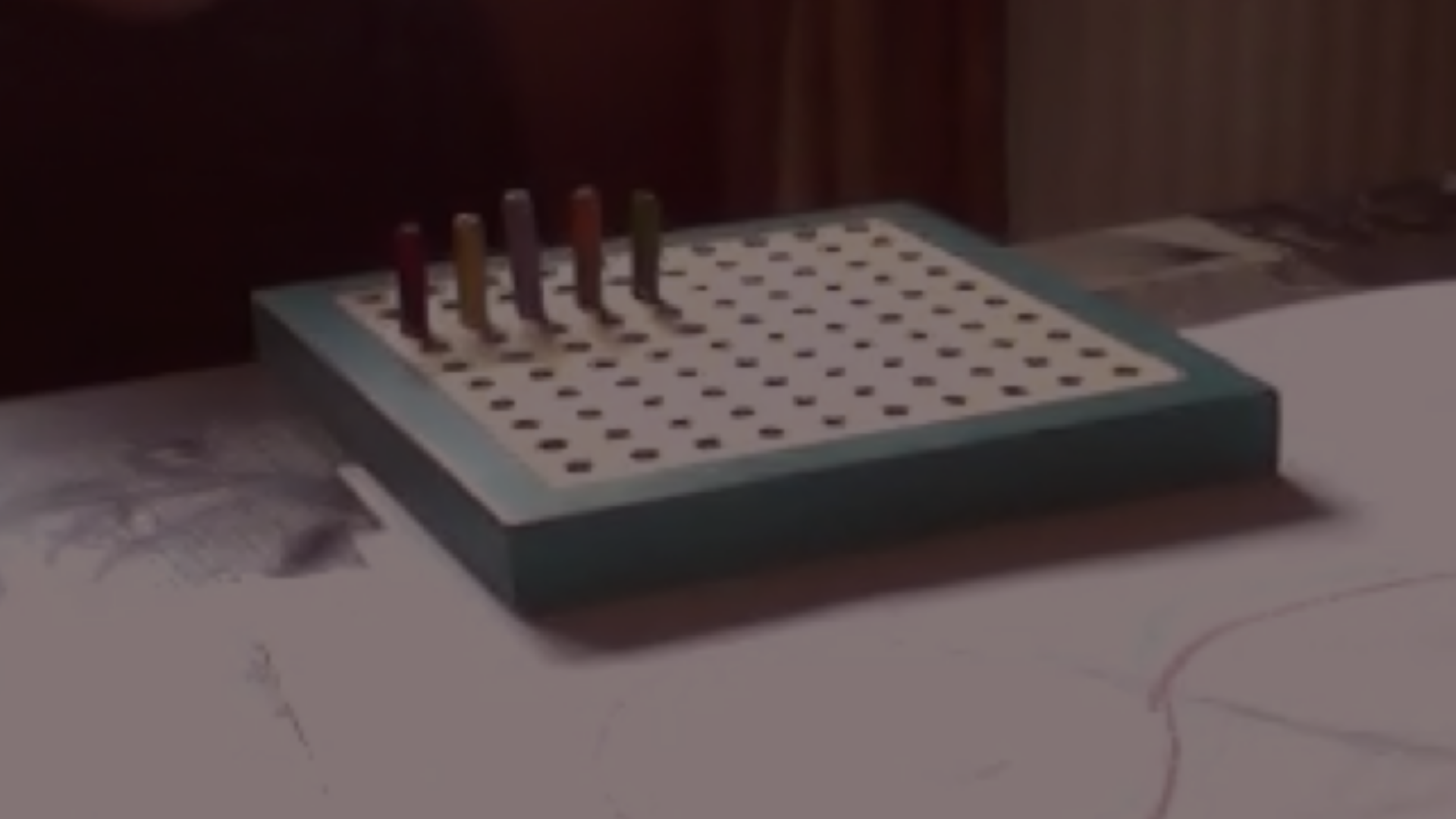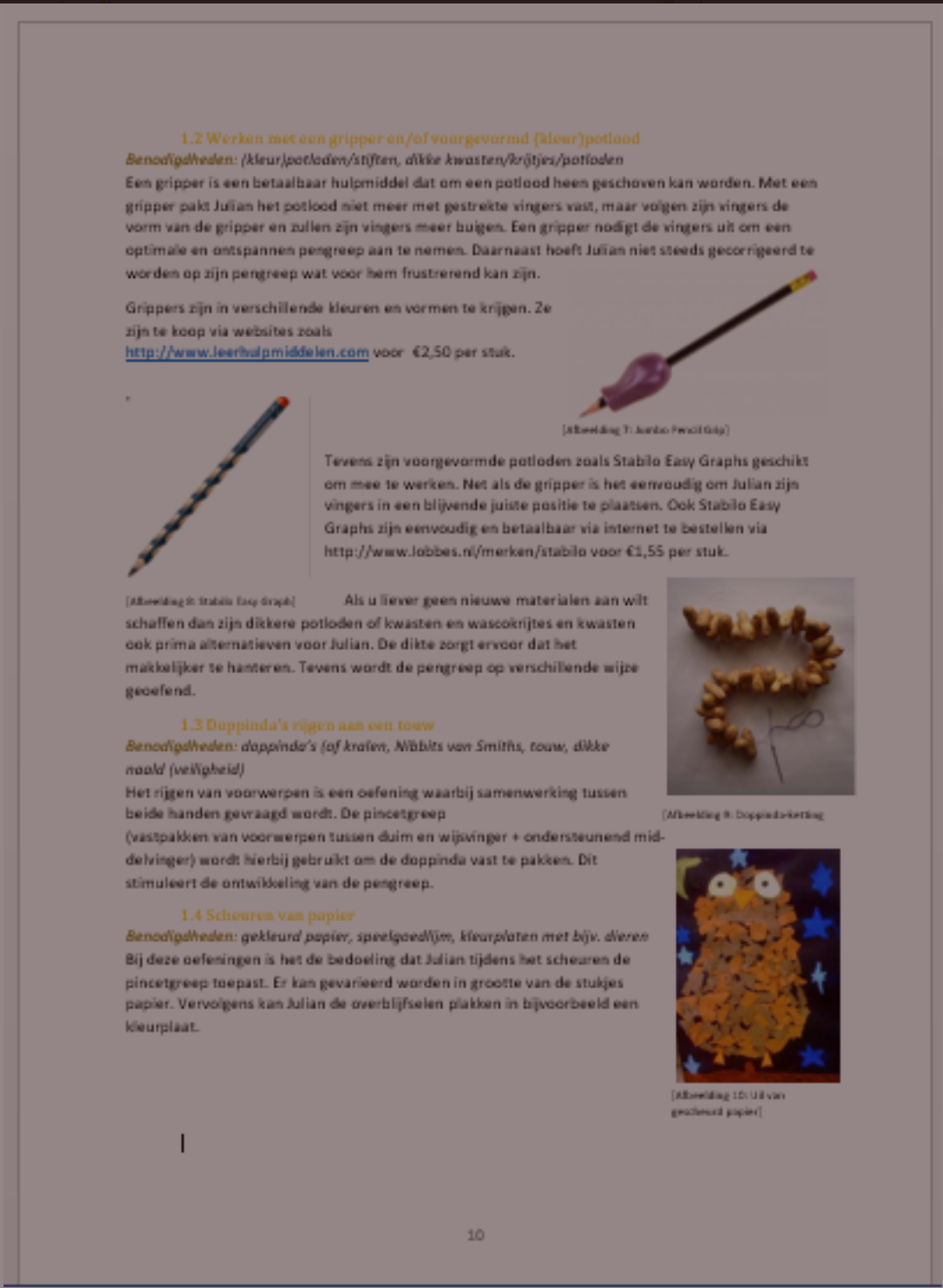We are two occupational therapy students who are curious about prewriting skills of children in other countries and how other OT-students become acquainted with these during their education.
In this blog we write about a Dutch assessment which we were introduced to when we had to screen the prewriting skills of children. We will also share our experiences of this assessment with you. Finally we have some statements we would like to discuss about.
KOEK
We like to write a blog about a Dutch assessment the KOEK. The KOEK is an assessment developed by Hartingsveldt van MJ, Cup EHC, Corstens-Mignot MAAMG (2006). The name KOEK stays for ‘The Short Observation Occupation Toddles’ and is developed for children in pre-school. The English version of the Koek is the SPOT (Screening Prewriting Skills Occupational Therapy) The spot has been developed for: 5 and 6 year old children with mild fine motor problems or 5 and 6 year old children showing even milder problems or children that could not be diagnosed with DCD.
The SPOT aims in offering a guideline for observing fine motor skills in preschoolers. The SPOT is a tool for observation with the emphasis on quality of the performance. It has been developed to be used by occupational therapists to assess whether a preschooler has reached an acceptable level of writing readiness. The SPOT can be used to evaluate fine motor problems in preschoolers as well ( Hartingsveldt, 2006). For the SPOT is no special training needed but a profound study of the manual is necessary. The assessment can be done in 30 minutes.
Components SPOT:
1. Paper and pencil activity
Body position
Pencil grip
Color the picture
Write your name
Draw a man
Show the way
Draw a zigzag
Finish the curling lines
2. Fine motor activities
Cutting
In-hand manipulation
Bilateral movements
Racetrack
3. Scorelist
Our experiences with the KOEK by Teddy Meijboom
Getting familiar with
Before we were allowed to start with the screening of a child we had to study the theory. In several courses we were introduced to the KOEK. Lectures about the background information of the KOEK, seminars to exert itself and practical instruction about performing the assessment.
Purpose and goal
The purpose of the screening for the student was become proficient in this assessment and for the parents to have an idea of the prewriting skills of their child. Finally we wrote an advisory appropriate advice for parents to assist their child in its development in terms of writing. So that the child’s skills will develop to the standards of his age and that it keeps developing.
Image 1 Advisory as a result of the KOEK
We had to arrange a child by ourselves (of course I had to ask permission from its parents) through our own social network. Relating to privacy I call the child in my blog as Tom.
Benefits of screening pre-writing skills with the KOEK
A wide range of tasks keeps the assessment interesting. I noticed Tom got more excited by each tasks because he continuously got challenged.
Tom and I had a lot of interaction during the screening because I had to explain the tasks. Beside that he challenged me to participate. For example when he had to color the dots on a fish I joined him by talking about the fish or also color pick a color for him.
Cons of screening pre-writing skills with the KOEK
The exercises contains writing patterns, coloring and cutting paper. Crafts is normally something boys do not like so I had to made up a story to motivate Tom these exercises are not girl-ish.
Some exercises Tom refused to do directly. This may affect your test results.
 Image 2 Screening KOEK: Bilateral movements
Image 2 Screening KOEK: Bilateral movements
Tips
Skip exercises your child does not want to do. Ask it why and try to trigger him to do it anyway. Do not force it and stay equal.
The child will perform best when he is comfortable and sees you as a friend to play with. Try to be his buddy but make sure you lead and keep your goal in mind
Be flexible and creative during this assessment.
Experiences of Laura Lange with the KOEK
When I start with the KOEK it was necessary the study the development of a child. Fine motor skills are essential for the performance of children’s occupations. Before I can start with KOEK I need to understand what a 5 of 6 year old child should be possible to do.
After this pre-study I found a five year old child how starts with pre-school. The parents where curious of his fine motor skills. After pick up the KOEK-Box with the manual, drawing booklet, score booklet, 100-holes pegboard and pencils, I introduce myself to the child. He was excited to do the pre-school-works.
 Image 3: 100-holes pegboard and pencils
Image 3: 100-holes pegboard and pencils
It was cool to do an assessments that looks like normal drawing for the child. I prefer to record the assessment so I can focus on the child and the interaction. After the assessment I have score the skills of the child basis on the video.
Image 4 Book cover paper and pencil activity
Reviews
M: The “KOEK” is a fun and use friendly instrument, which measures the fine motor skills while drawing and playing games. It’s good to have this interaction with the kid while doing the assessment!
Discussion
We would like to have a discussion about this target group and the benefits and cons of working with assessments. The follow questions can be therein a starter:
What is your opinion about working with children and the experience with assessments developed for this audience?
Would you like to work with children when your graduated?
Should children perform to a certain level or should we not fix such things like development?







